Preface:
27 Feb 2006, I visited the small island of Yantupu just south of Ustupu. On this island is a sign “Isla de Paz
de los Dirigentes de Ustupu y Kuna Yala (Island of Peace for the Leaders of Ustupu and Kuna Yala)” and 17
concrete graves. Some of the graves are inscribed too faintly to be legible and some do not appear to have
been inscribed at all. A few have wooden signs identifying the remains. The legible names and dates were as
follows:
Saila Odis Nova…
Oloyoguipi 1904 - 1999
Sahila Iguanabiquina 1896 - 1988
Sr. Olodibeidinapi 1890 – 24 Abril 1988
Sr. Samuel Morris 1901 - 1996
Rev’d Jose Perez 1917 - 1992
Olotebiliguina 1894 - 1970
Nele Kantule 1868 - 1944
Pinacdigninya 1909 - 1978
The day before, I had visited the home of Jesús Smith Kantule and he had shared with me some information about
Kuna Culture including how most of these individuals had come to be buried on this island rather than in the
traditional family burial areas inland in the mountains. This information is the text is the text below which
I have begun to transcribe and translate from the written notes in Spanish by Jesús Smith Kantule.
As you read, consider that I am not particularly fluent in Spanish, this is laborious and perhaps not
very accurate work. Where I have left off, I provide the original handwritten text for your perusal. I will
get back to it and gradually replace the photo'd text with e-text. Throughout, English text is in italics.
A los 60 aniversario de la muerte del ilustre Kuna Nele Kantule Igua Tbiliginia.
Por Jesús Smith Kantule
Hoy dia estamos a dos dias en que una fecha 3 de Septimebre de 1944, causó el desgarramiento spiritual que
produce la perdida irreparbable de un conductor de calidad y caliber de quien en vida se llamo “Nele Kantule
Iqua Tbiliginia” de igual sentido hemos tenida con las disapariciones de otros, como los fueron Olo
Gindibipi Colman, Olo Nebiginia, Igua Niedibipi, Susu, Denupdi y asi a todas los que acompanaron a este
ilustre Kuna. No nos cabe duda que hoy como ayer los tenemos en nuestros corazones la gratitud eterna.
This day, we are near the date of September 3 on which in 1944 we lost the irreplacable spirit of a man of
quality and character who was called in life Nele Kantule Iqua Tbilinginia – and we have equal feeling we
have had with the loss of others who have gone – Olo Gindibipi Colman, Olo Nebiginia, Igua Niedibipi, Susu,
Denupdi, and all those others who accompanied this illustrious Kuna. We undoubtedly cannot fit into our
hearts today any more than in the past, our eternal gratitude to them.
Ese homenaje de hoy en este templo sagrado que utilizo para sus pretigas y la peregrenacion de manana, no
debe de tener unicamente el caracter de un manifiesto afectivo era que venimos a tributar el homenaje del
recuerdo al hombre Kuna admirado, que desperto en el alma de los Kunas los mas a condrados sentimientos
nacionalistas, es necesario que tambien tenga el caracter renovadora de los propositos, nacionalistas,
progresutas que nos legaron con su a porte de luchas visionarias. Hoy despues de 60 años de su muerte aun
seguen creando cizanas a ese hombre bondadoso y luchador, con el fin y las deseos de destruir sus luchas
reivindicadoras.
This homage today, in this sacred temple used for preparing us for the journey to tomorrow, cannot have
only the characteristic of a manifesto for a Kuna man that we admire, who infused in the spirit of the Kunas
feelings of nationalism. It is necessary also that we restore to ourselves the progressive and nationalist
principles that were first raised by his visionary struggle. Today, 60 years after his death, we must at last
recognize in the life of this uniting and fighting man, the desires his struggle first engendered.
Nos decia abuelo Nele “Cuando los hombres encarnan grandes ideas y por ellas, luchan, sufren reveses,
alcanzan exitos y levan tan un monton de servicios y mentos, su personalidad alcanza esa estatura con que
descuella perticieramente entre sus contemporaneos”
We say to grandfather Nele, “When men live out their grand ideas for all, struggle, suffer loss, create
successes, and provide such a wealth of service and ideas, their persona achieves a greater than ordinary
stature.”
Jovenes de hoy: y del manana: Cuando ocupamos nuestros cargos como enviados por Pab Dummat, tomamos un solo
norte que es RESPONSABILIDAD asi espero que ustedes tomen esa responsabilidad y sea ese lema como un scieno
prioritario. Aprendimos arte de governor, el legado de Tad Ibe y sus hermanos luego de Ibeorgun, Fueren con
las bases fundamentales y filosoficas que nos habla: de “Mete kua guenna” con sus principios “Kuna Tiguer
Dui Kuagua Idackagua.” De ellos tambien aprendimos que la unidad combvate el desconcierto de los pueblos,
que unidos forma mas, y podemos llamaronos que somos solidarios, que al centra mos asi no solo lograremos
ese territorios como simple habitad o lucro de una simple economia, sino tambien es la formacion y
conservacion de nuestra cultura, su lengua, su historia con esto la unidad soberana.
Youth of today and tomorrow, when we consider our obligations under God, we take as our only direction that
of responsibility, and so I hope that you take the credo of responsibility as your own priority. Understand
the art of government, the legacy of Tad Ibe and their later brother Ibeorgun. They have gone over the
fundamentals and philosophy of “Mete Kua Guenna” and its principles "Kuna Tiguer Dui Kuagua Idackagua”. From
these we also know that the unity of the community, that gives us power when we are alone, is not solely
derived from our lands our simple habitations or our meager economy. No, it is derived from the conservation
of our culture, our language, our history – with this we are united.
No me cabe duda jovenes que le di estan en este sagrado templo querer preguntarme: Sr. digame que a hecho
ese hombre que hoy estamos rendiendoles homenaje? Bien cierto es la pregunta. Con gusto les respondo: es
decir vamos a identificarnos sobre la pregunta – y les quiero agregar y tambien pregunto como abuelo Nele
escribio tanta historia. Teologica, Cultural, Artesanal y asi todo conocimiento Kuna, se no sabia leer,
escribir ne hablar mas que su lengua Kuna?
I have no doubt that you young people here in this sacred temple want to ask me: Sir, tell me what did this
man do, that today we pay him homage? For sure that is the question. With pleasure I reply, to tell you we
must go beyond this question and look at how grandfather Nele wrote such a history. The answer is theological,
cultural and artistic, and fundamentally Kuna – how could we know it if we don’t know how to read, write or
speak any more the Kuna language?
Vamos en su memoria abrir esa escuela cultural hoy. Asi diremos que el aun no ha muerte, se encuentra entre
nosotros. Comenzaremos a luz de nuestros orignene en forma del conpendio
Today in his memory, we are going to open the cultural school. We are going to proceed as though he is not
dead, and is meeting with us. Let us begin with a look at our origin in the form of a compedium (or catechism?).
Cuales la doctrina de "Tad Ibe"? Como Comperamos la doctrina de "Tad Ibe" con "Massar dumbi" y "Nele Sibu"?
Esos dos personajes estan llena de ejemplos que nos seria interminable: Que ensenanzas lego a nuestron
Tadagan Ibeorgun, Fuiren: Que valor nos da Kanagungi con su pronostico en la era Precolombino?
Los Prtincipios Democraticas de Tad Ibe Olouaibipiler: Fui uno de los principales Kunas que creo las leye,
o estructuras de la formacion de un gobierno.
La inspiracion divina les dio a Tad Ibe y sus hermanos a organizarse y a estructurar leyes contra la soberbia
que habia generado el primer enviado con sus aliados aliados: Biler sus hijos y Urkunable, fracasa ...
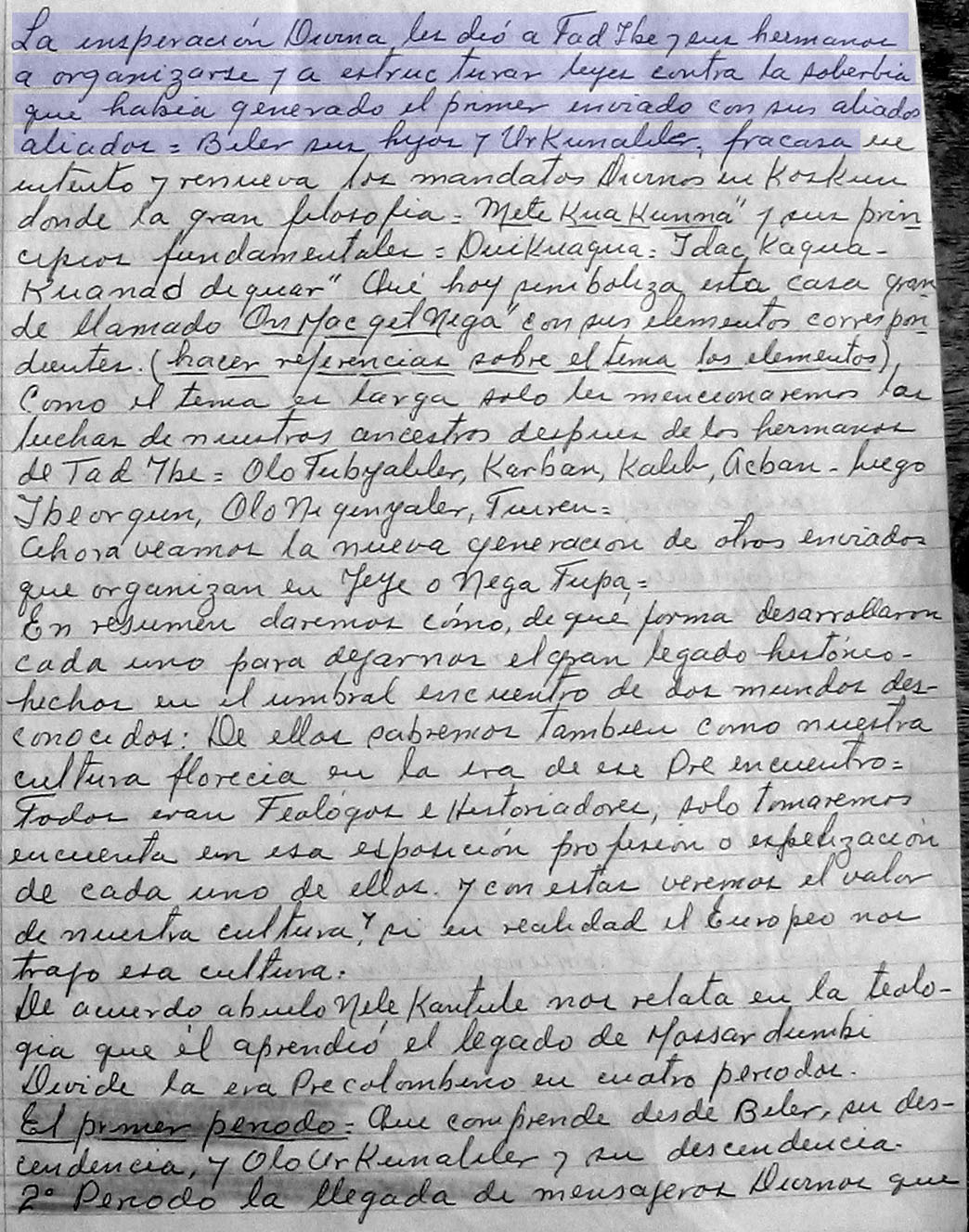
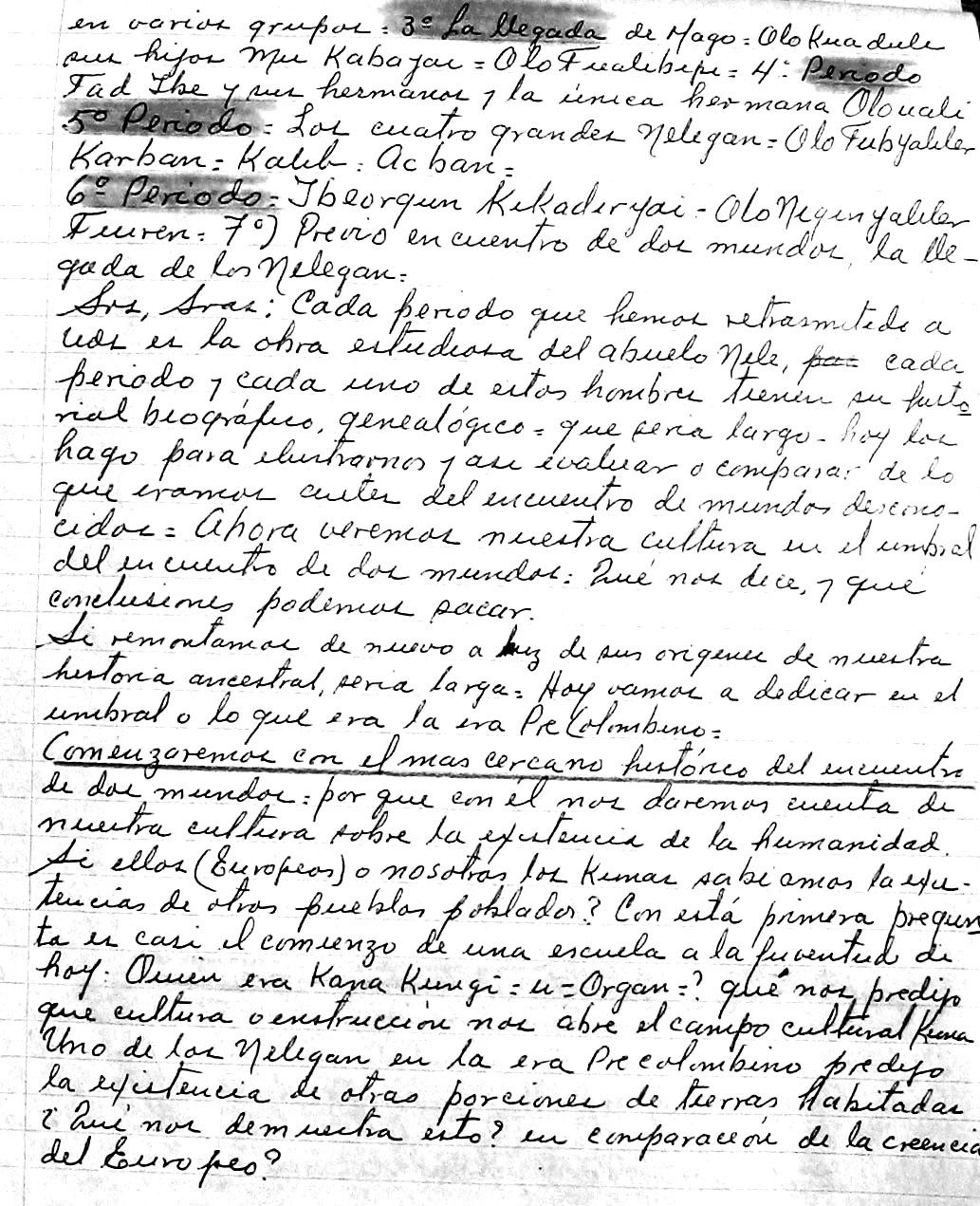


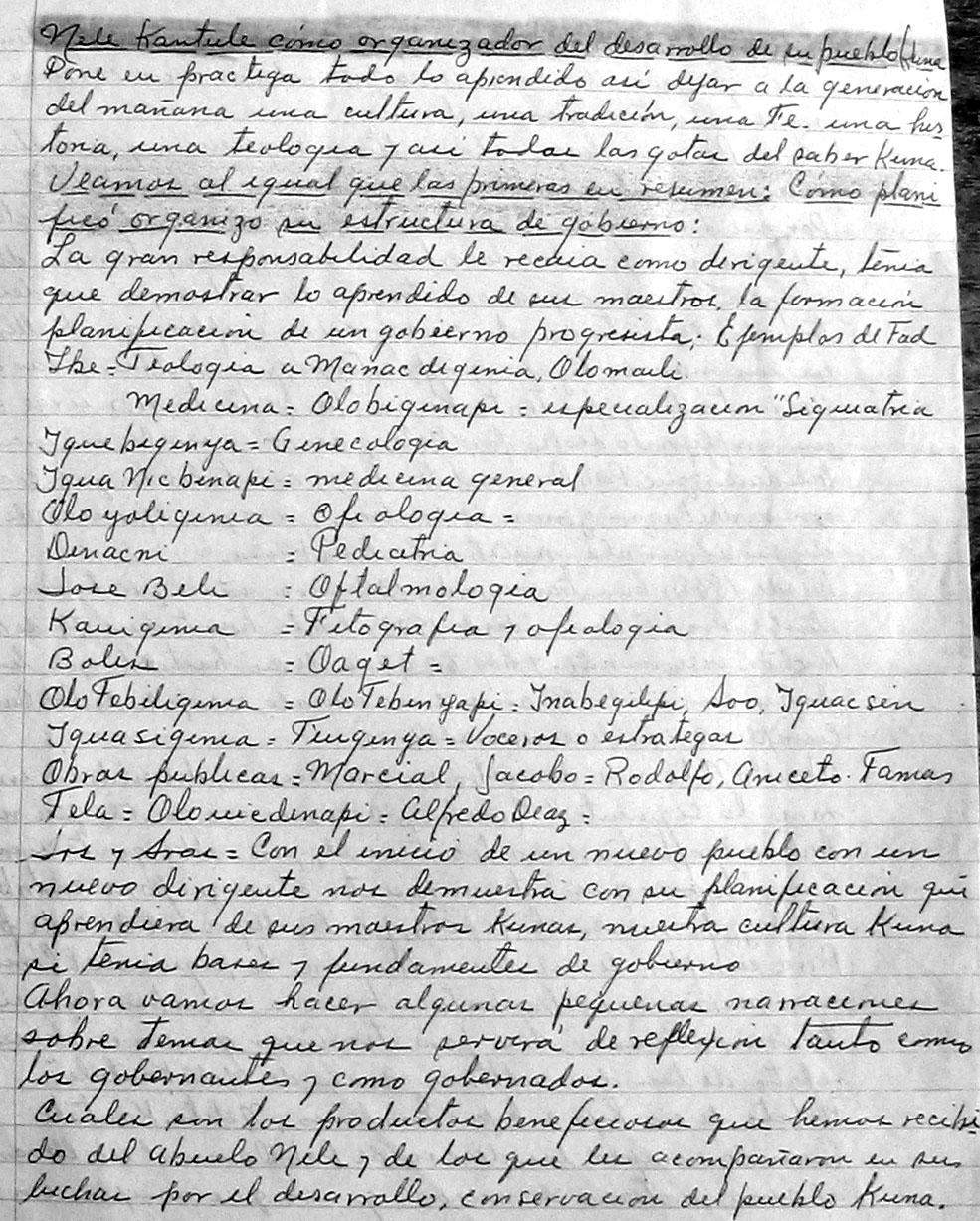
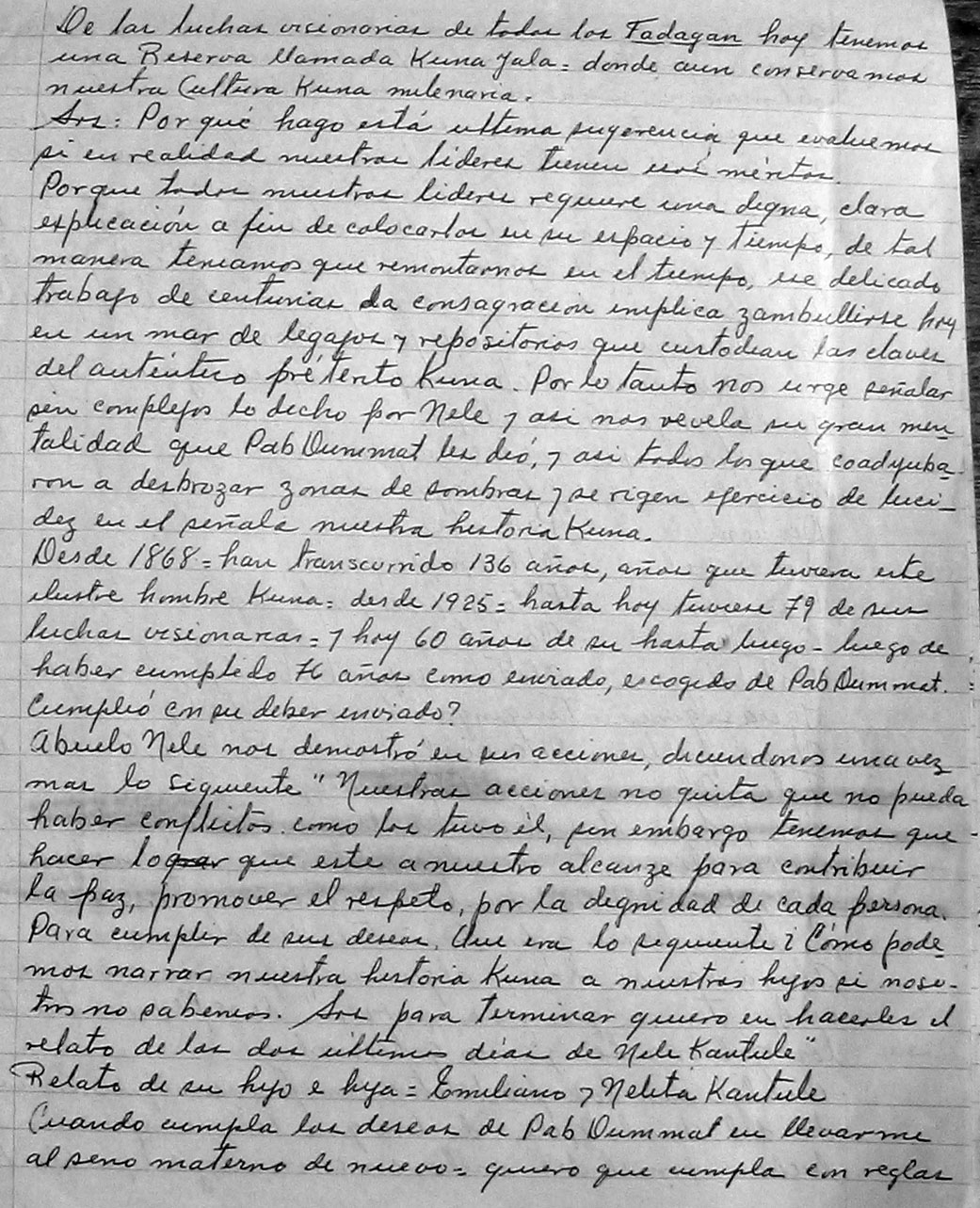
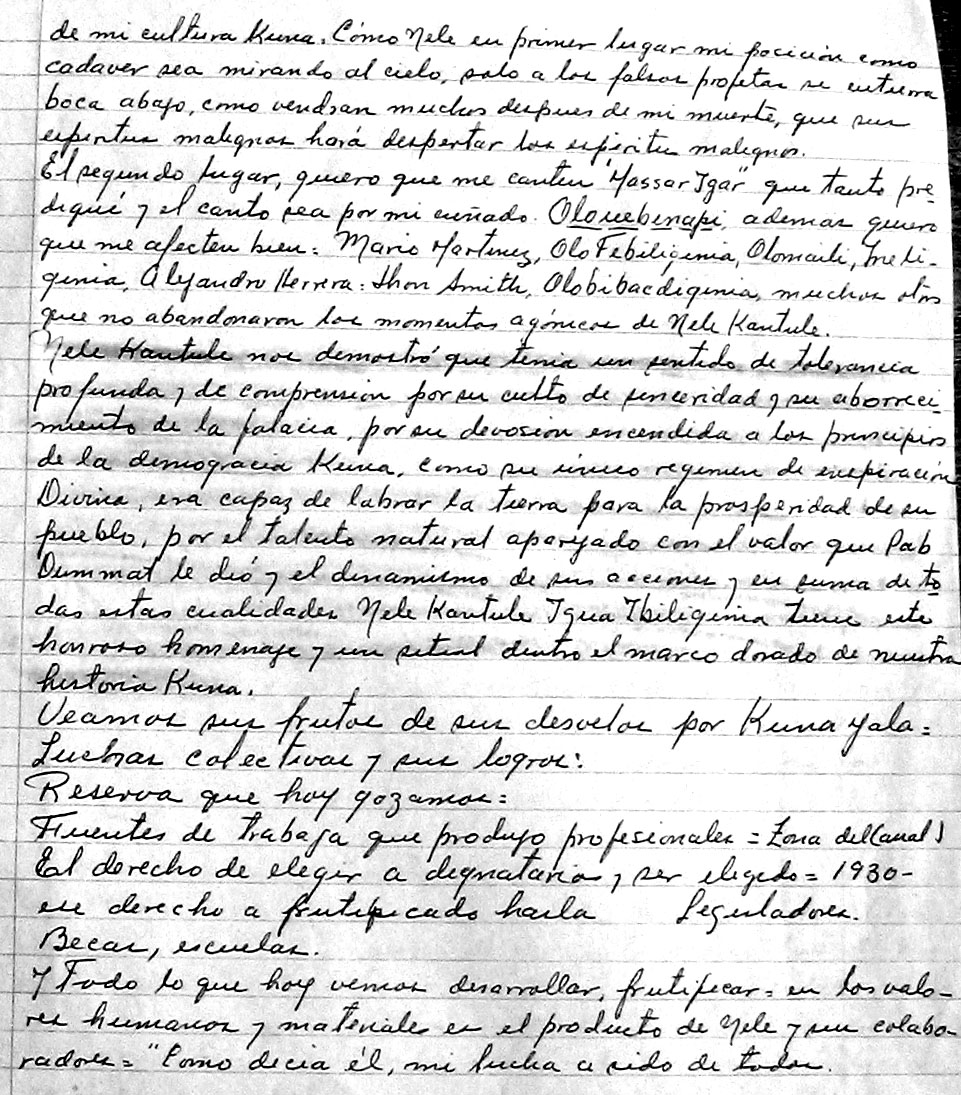
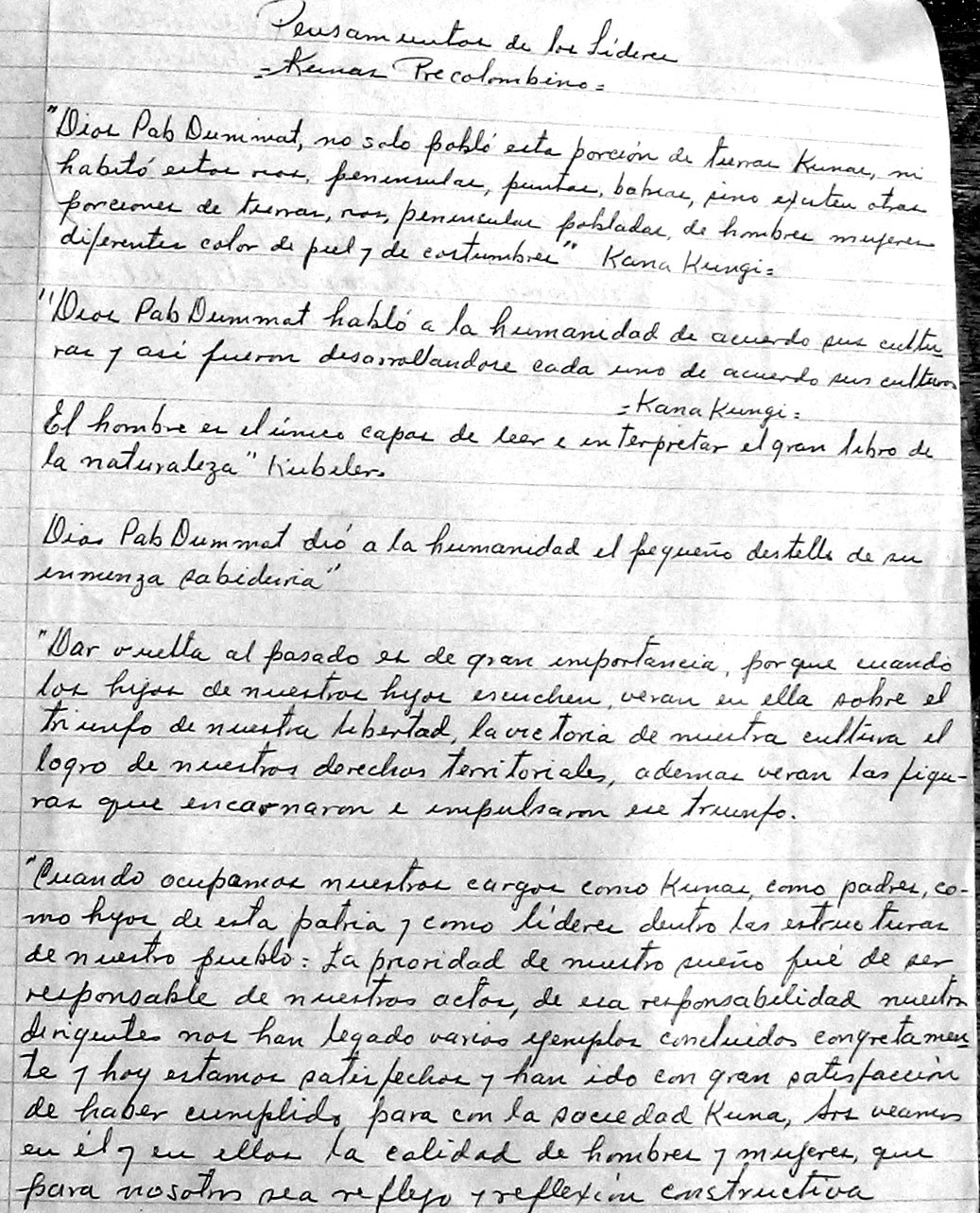

From here, you can read more about:

















